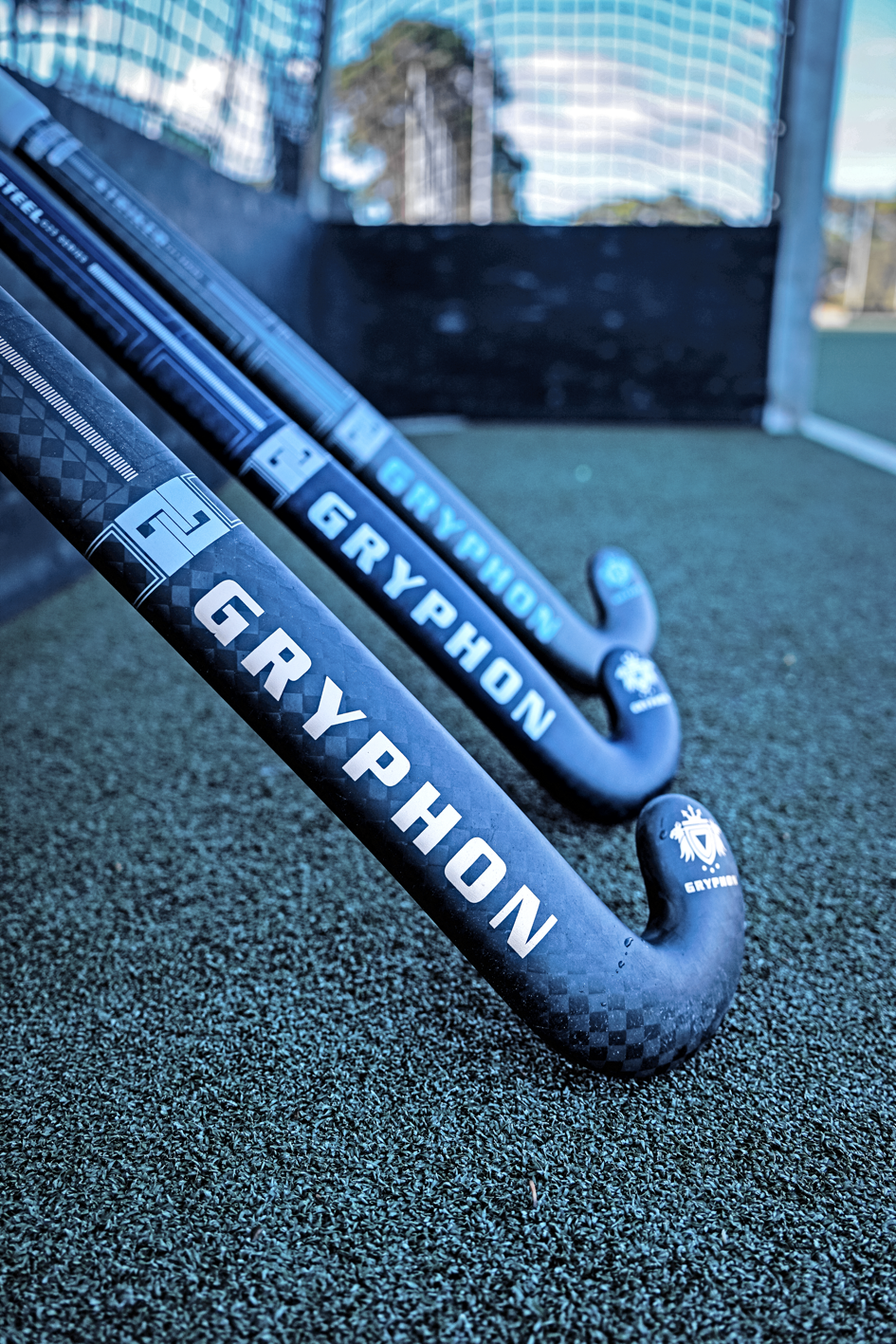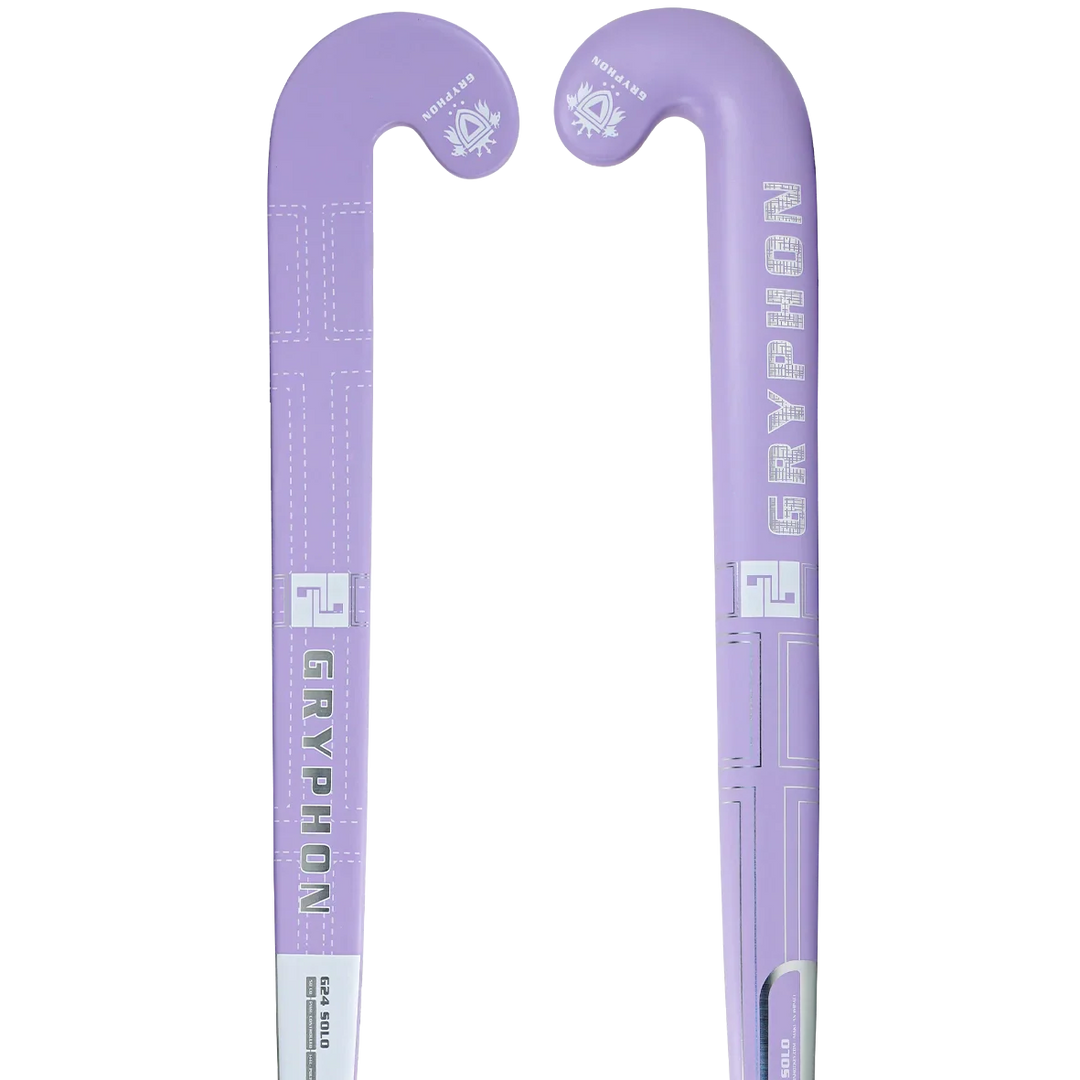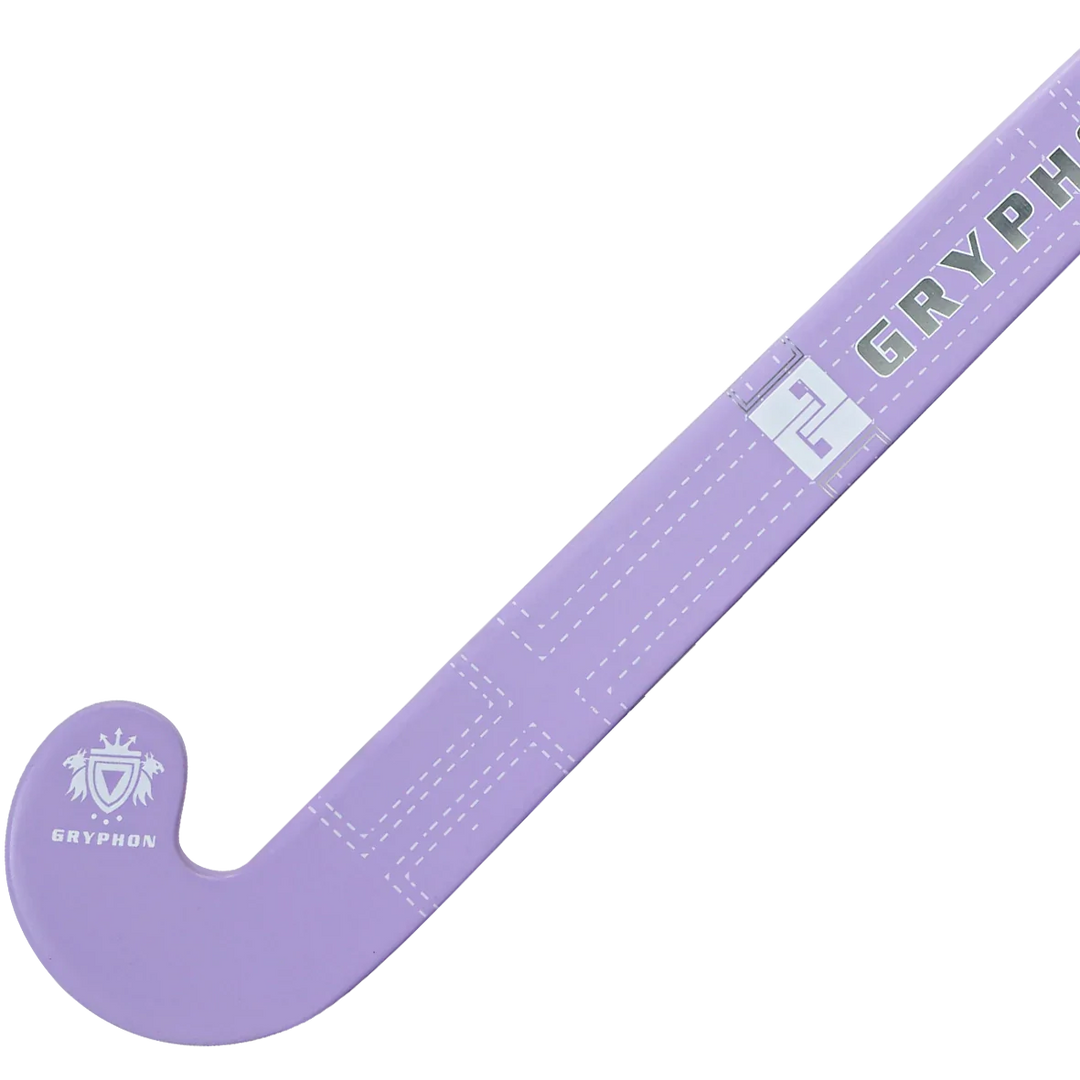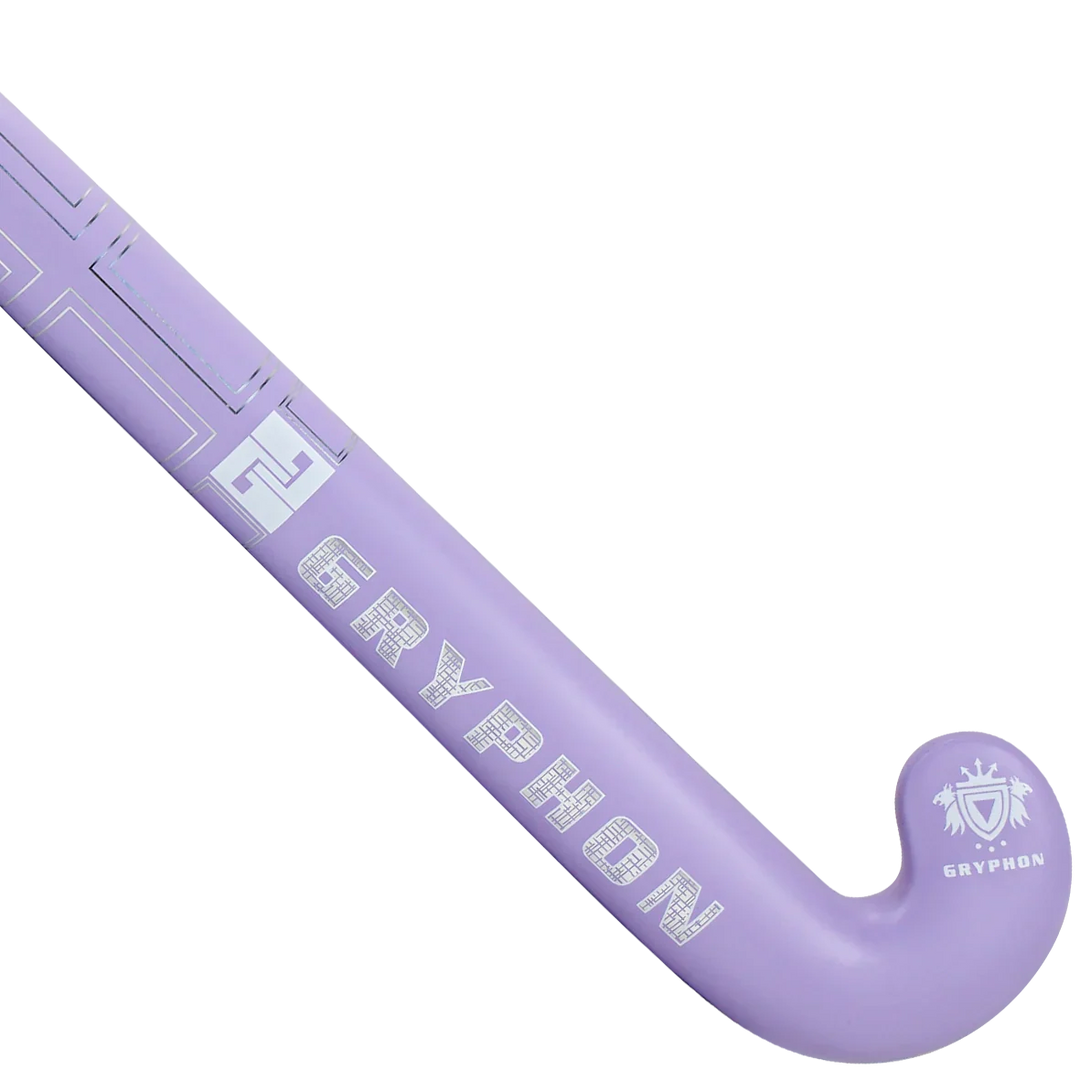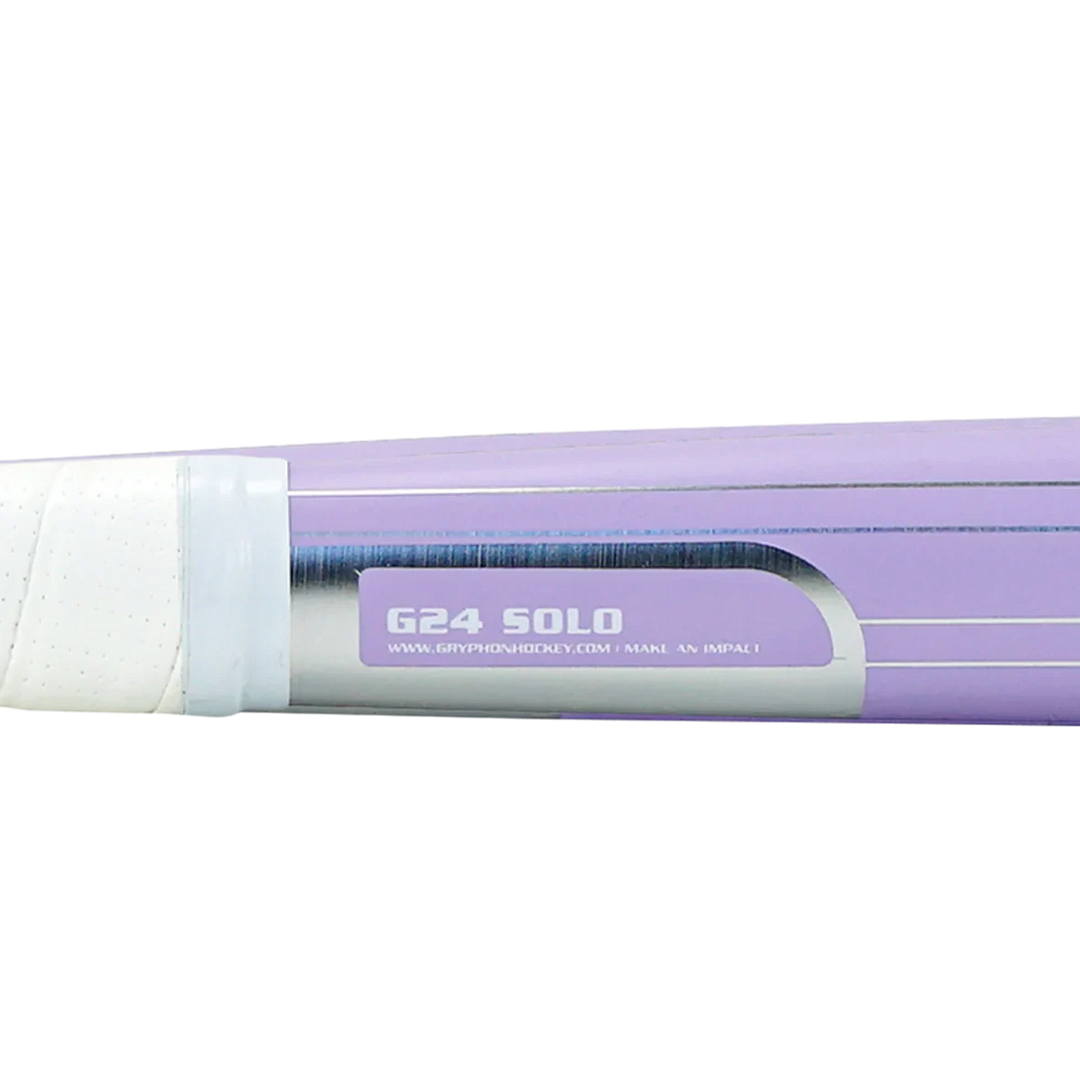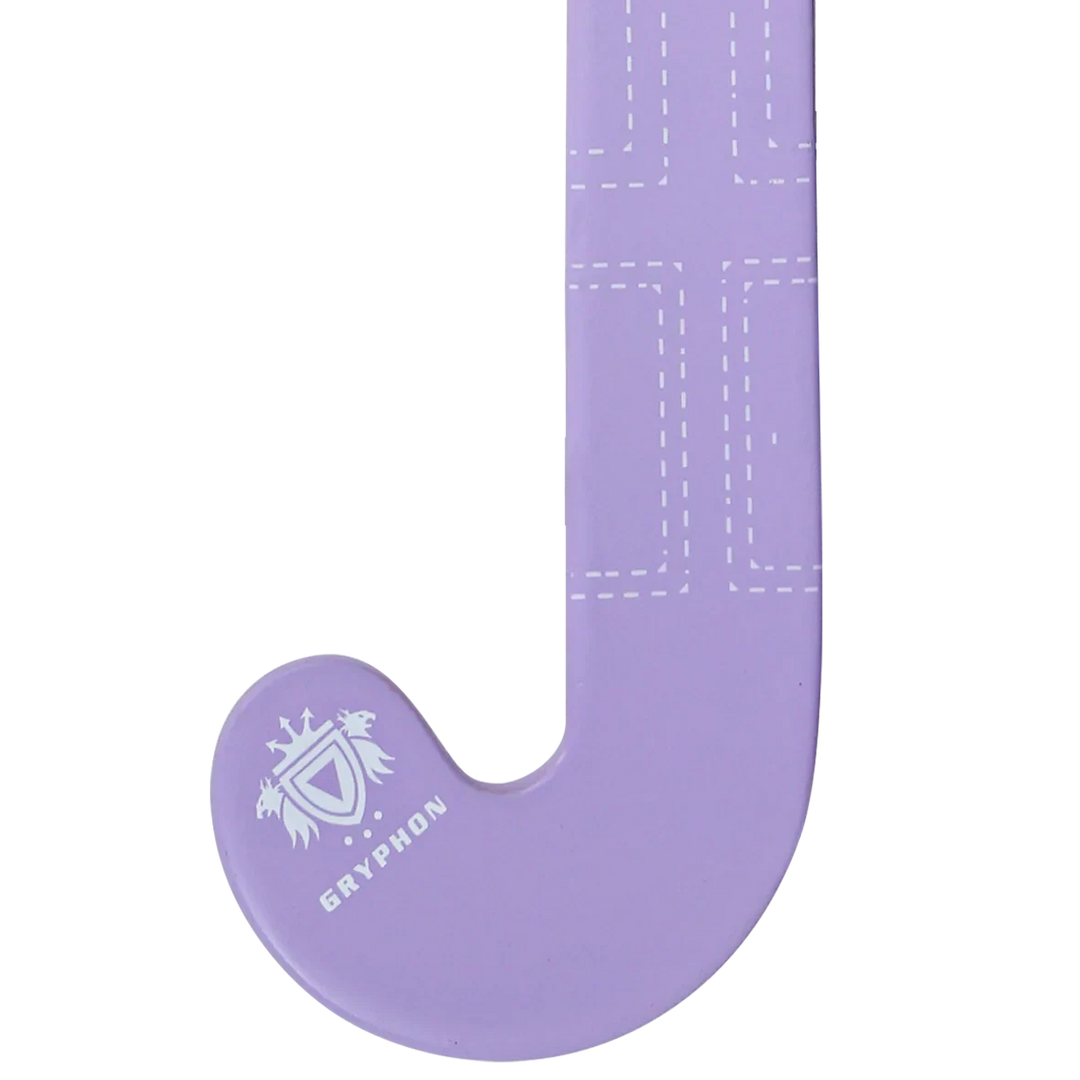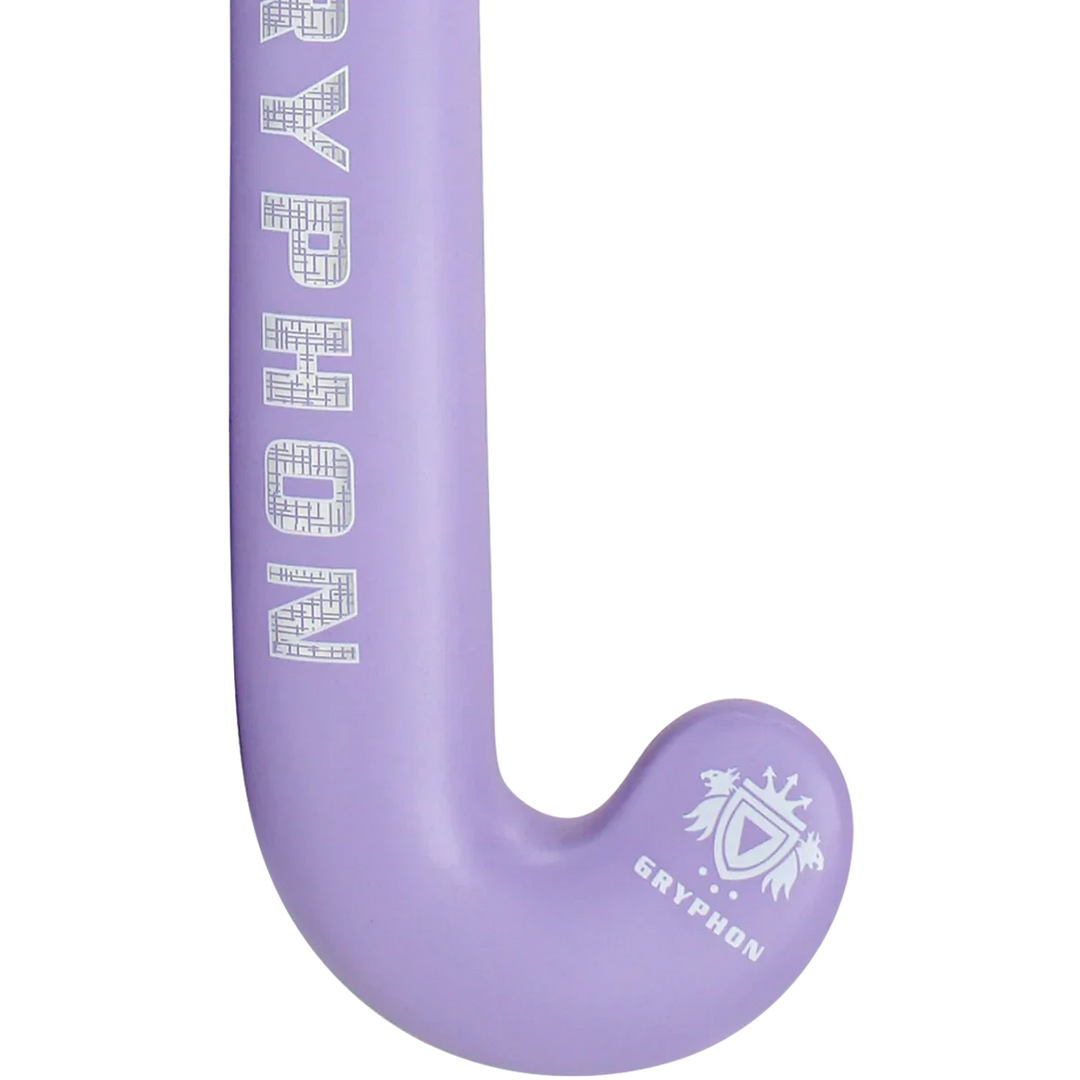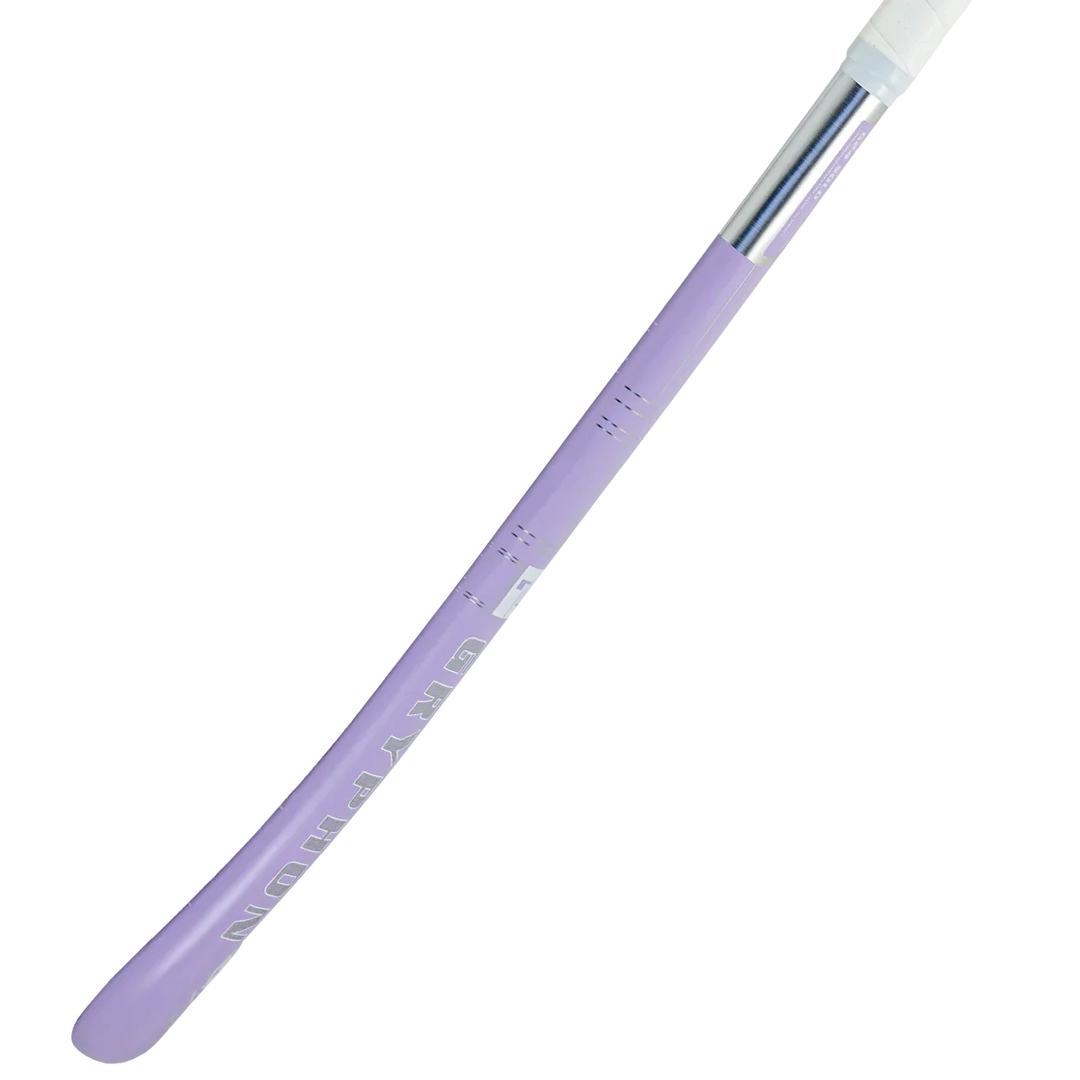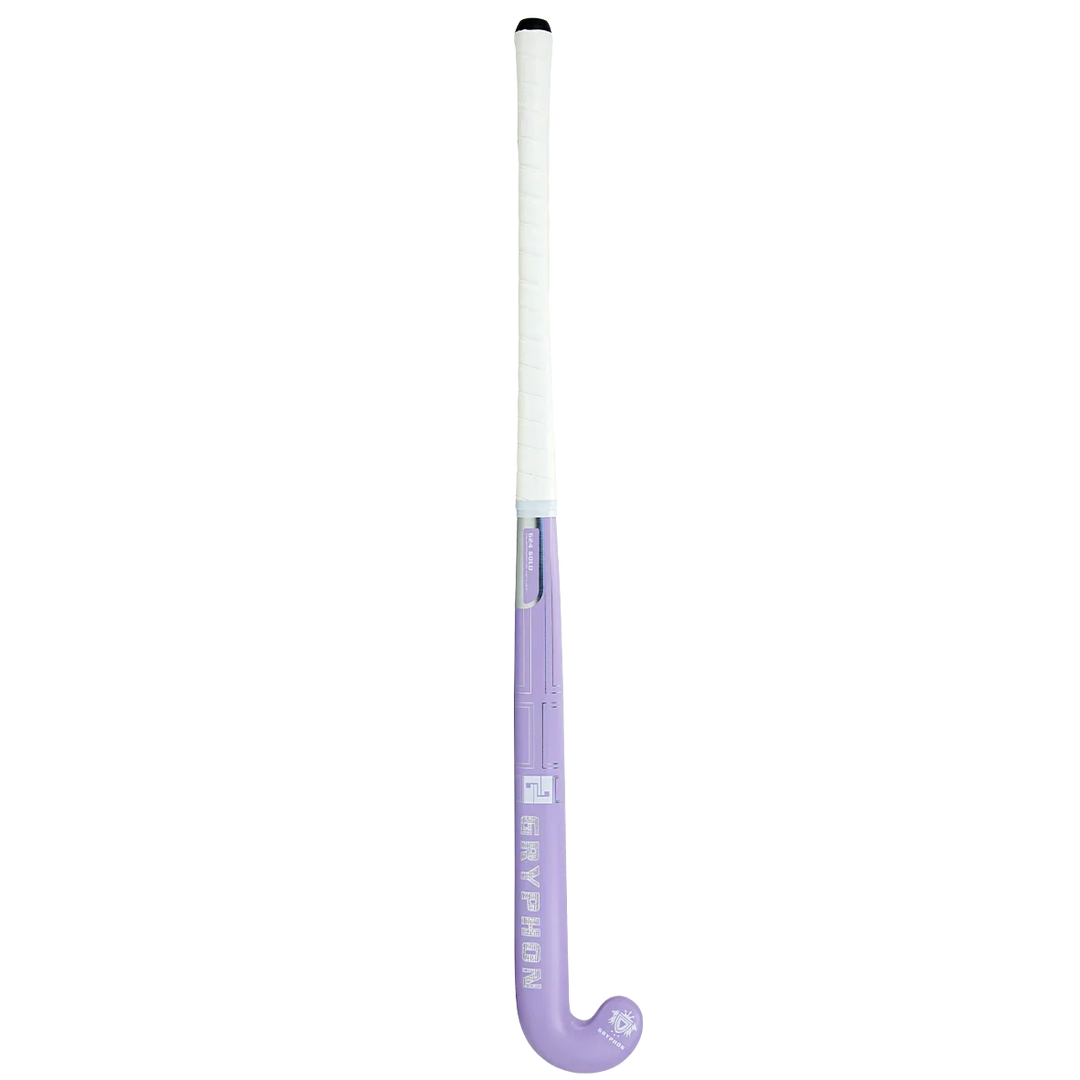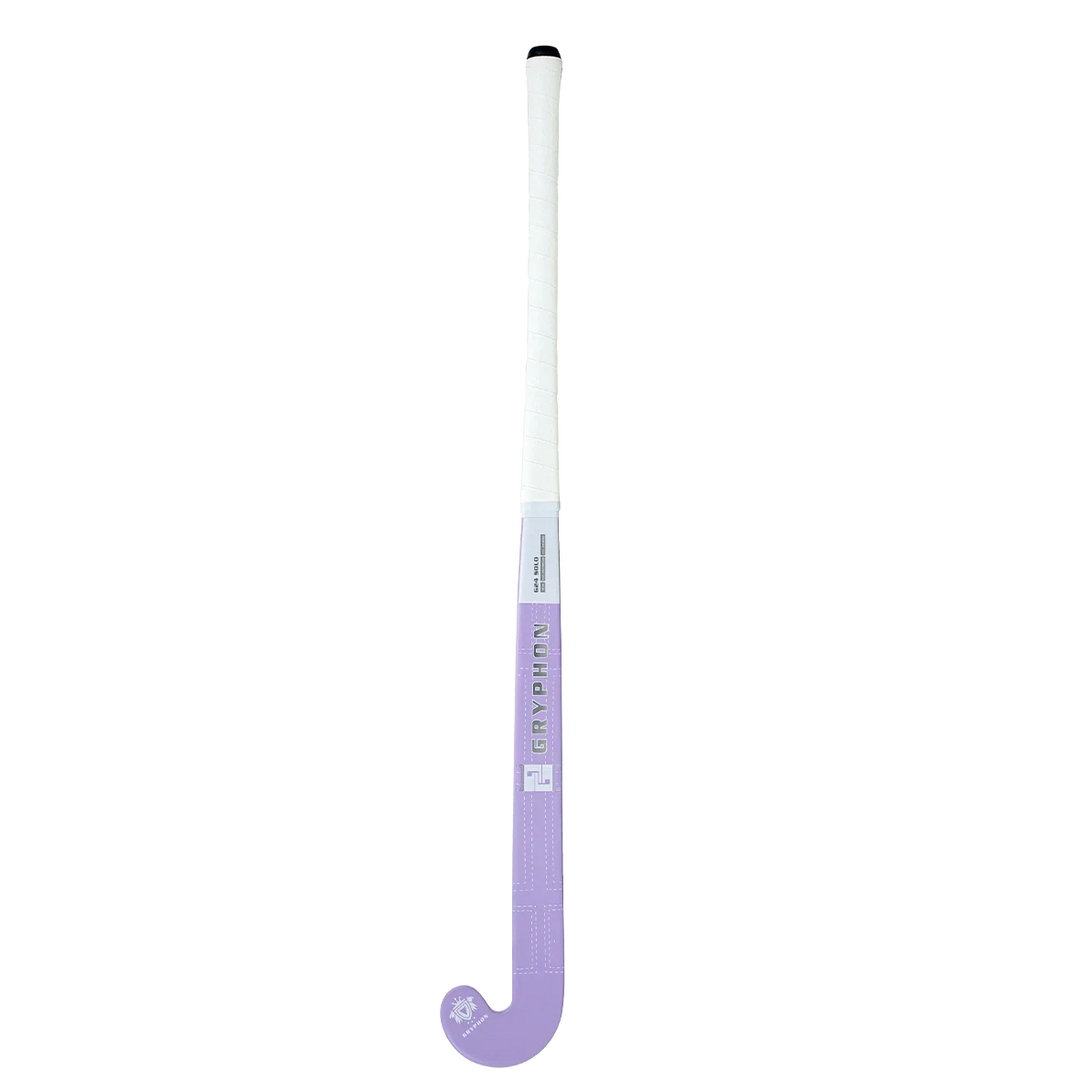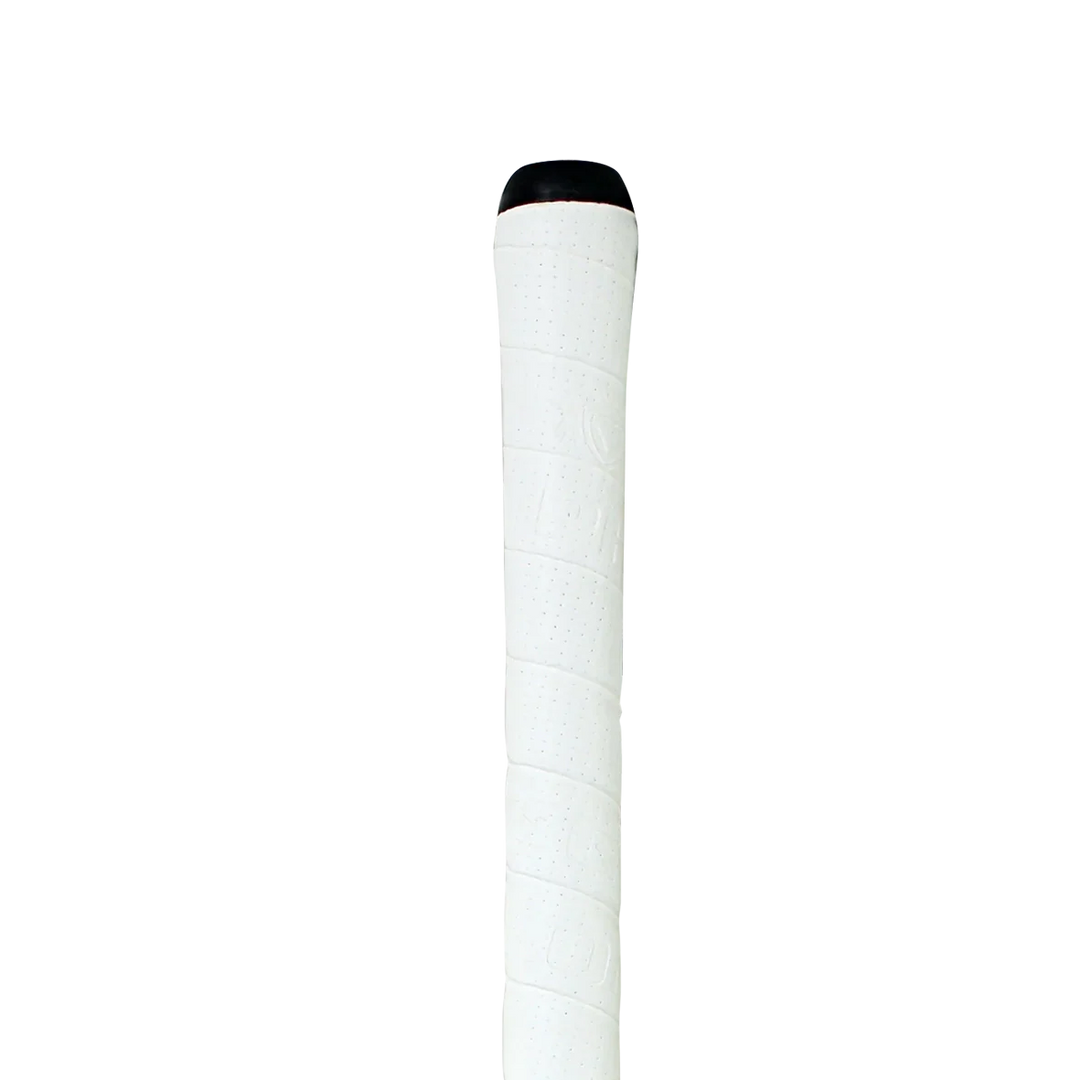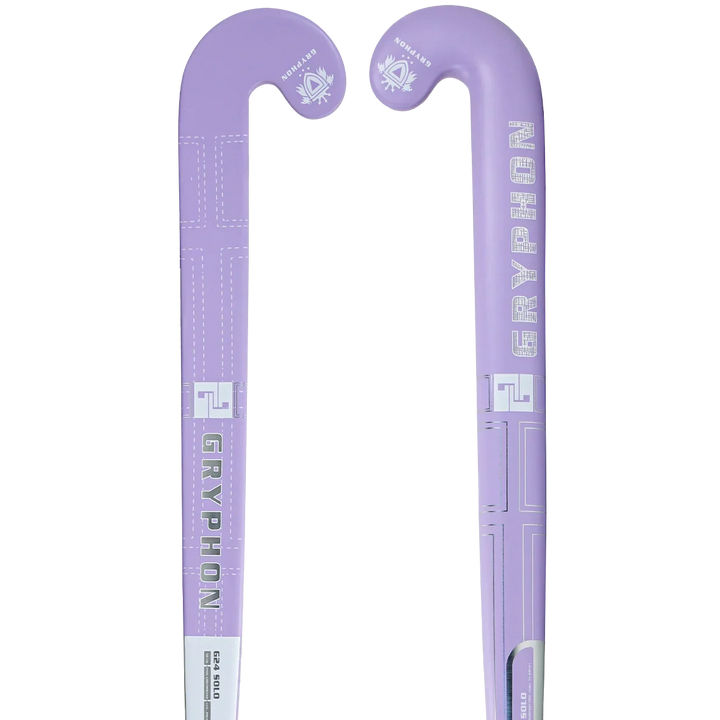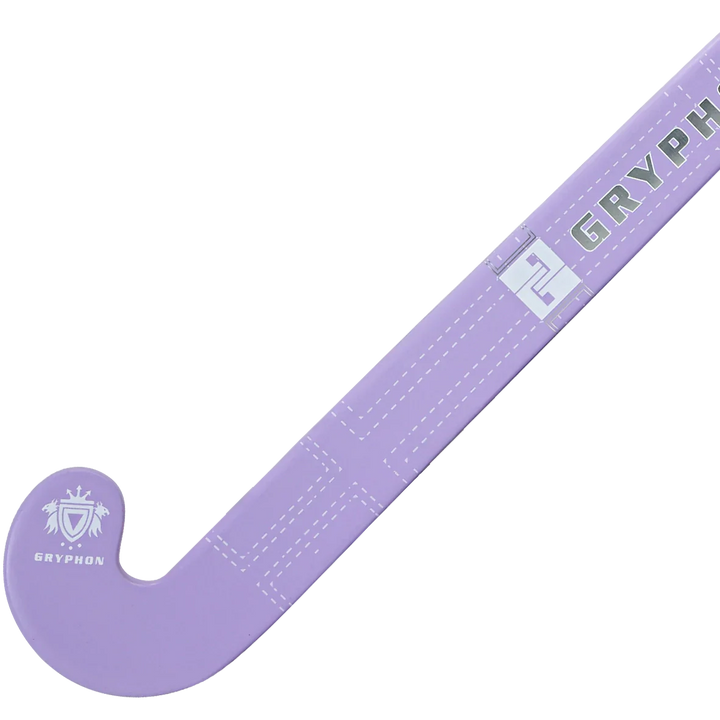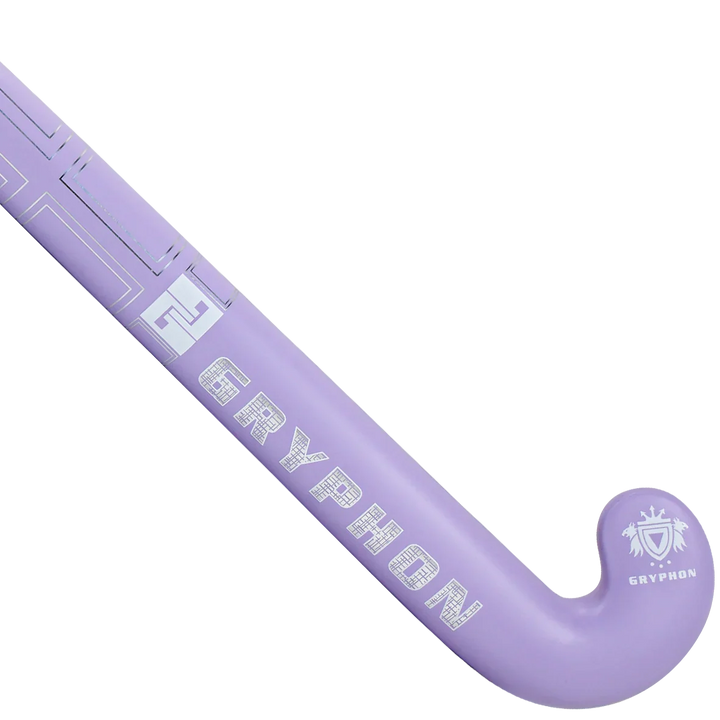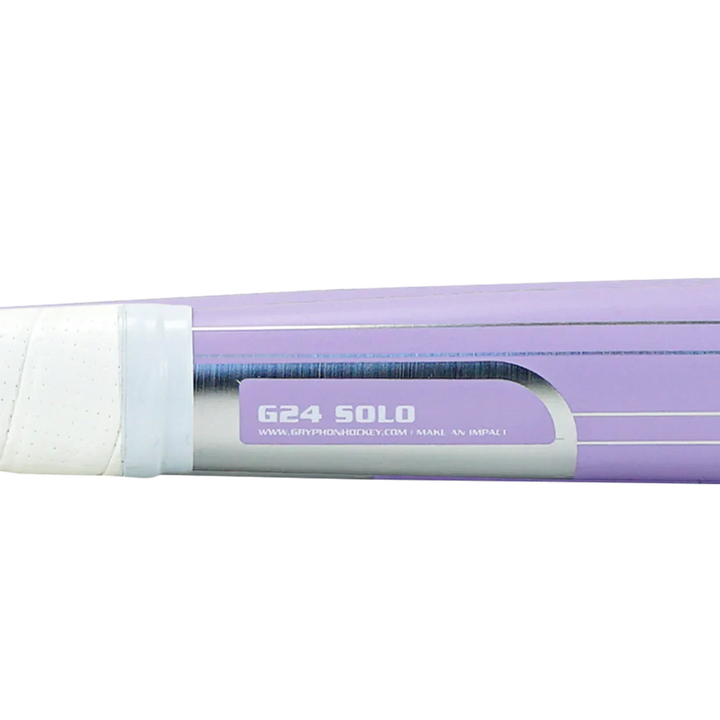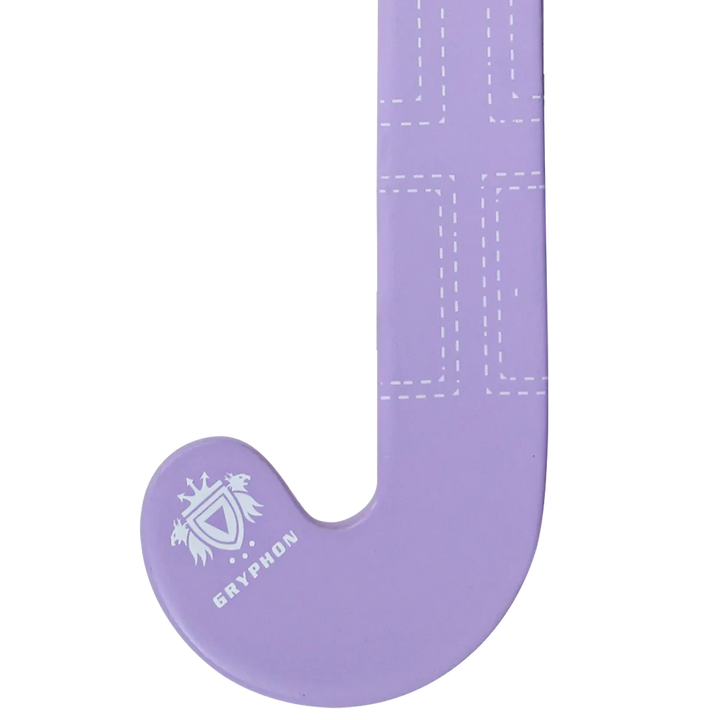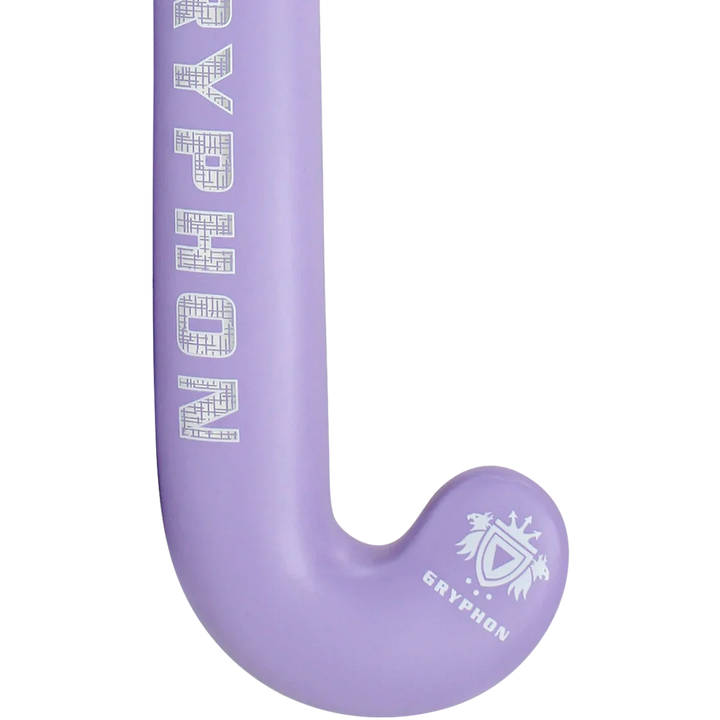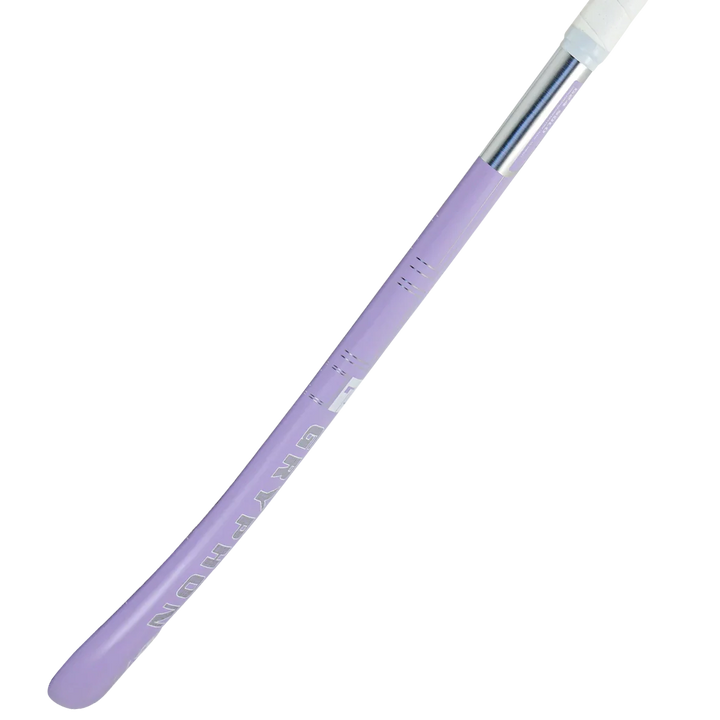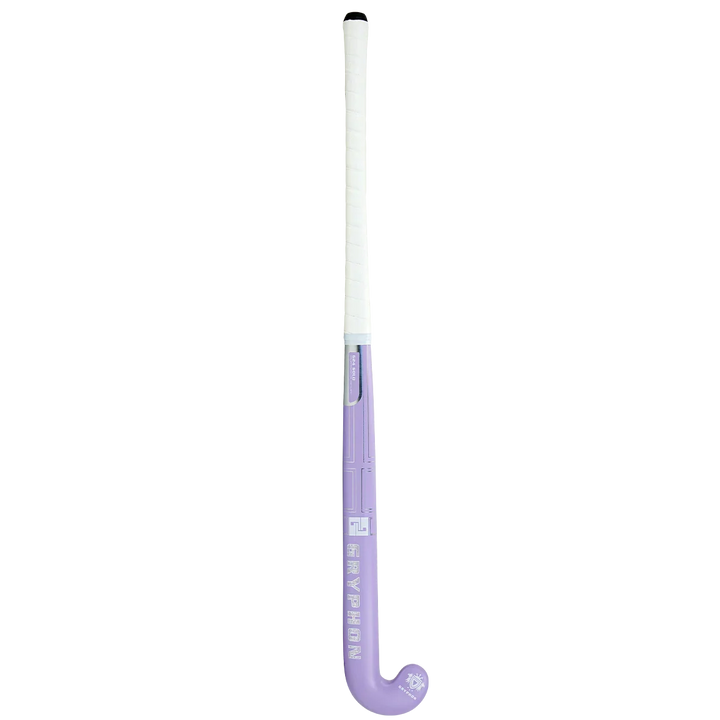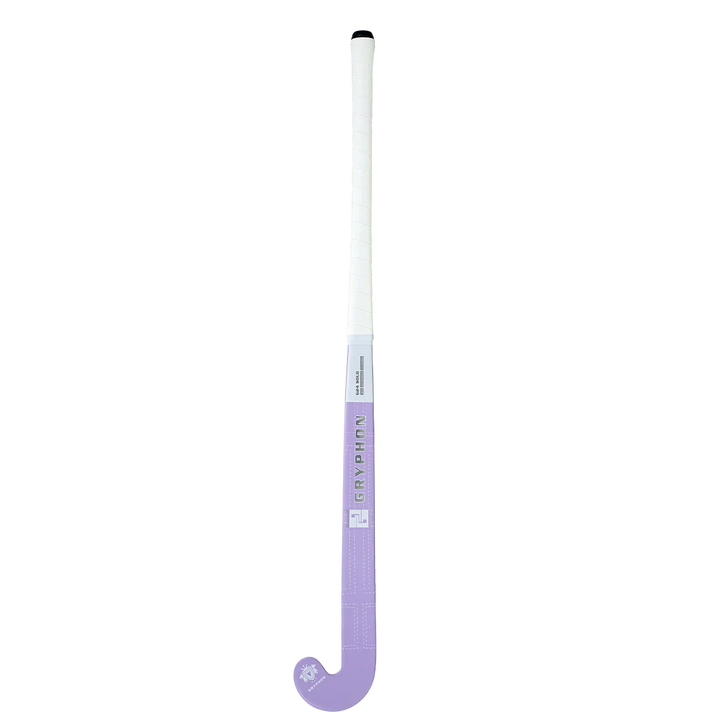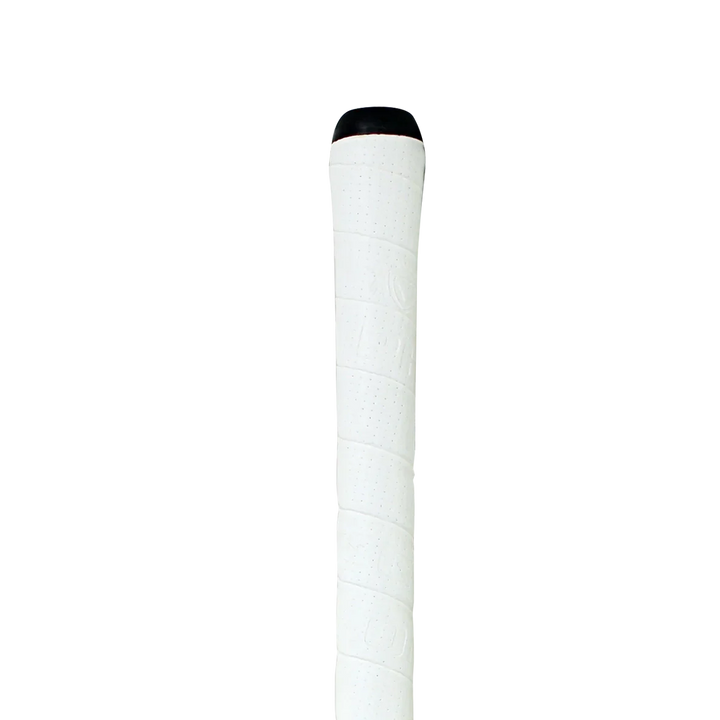GRYPHON Solo Violet G24 Pro-25

Hockey Stick Buyer's Guide
Introduction
Choosing your hockey stick starts with assessing you as a player and finding the best fit for the way you play (the skills you use rather than position) and what you want from the stick (feel, power, help).
Sticks come in different shapes and compositions which means they are not all the same and you won't necessarily get on with all of them. There is no stick that is a substitute for practice and your technique - magic wands do not exist!
Working out what might or might not work best for you is about two key factors: shape and composition.
Choosing Your Shape
Hockey sticks come in a variety of shapes (often referred to as bows, moulds, profiles or bends). Essentially the shape is defined by where the highest point of the bend (or bow) in the stick is positioned from the base of the head.
While brands may use marketing terms to stand out from the crowd sticks can be generically classified as Mid, Low or Extra Low bows. How their purpose varies depends on the angle of the stick head the bow position creates with the ball.
Mid Bow
The mid bow is not a common shape anymore due to evolution in the game. If you find one it is usually at the lower end of a range. Mid Bows are typically positioned around 300mm up the stick and so unless the stick is held at quite an acute angle to the ground the stick face is generally flat to the ball. This makes them suitable for the most simple basics of the game - hitting and trapping the ball. Anything more 'dynamic' (lifting the ball etc) means you have to do a lot of work with your hands and wrists to create an angle against the ball.
The Mid Bow shape suits someone who just keeps it ultra simple.
Low (or Late) Bow
The most commonly used shape today, the Low or Late bow usually has the highest point positioned around 250mm up the stick. This shape is a real all-rounder in that it helps with every skill in the game without being set up for any skillset specifically. You can perform the basics like trapping and passing the ball without lifting it but equally manoeuvre the ball with 3D skills or sharp angled movement with a slight wrist adjustment. You can flick the ball, play overhead passes again with some adjustment to your starting position.
The Low Bow shape suits someone with solid basics and a good foundational technique that has the control to move freely and manipulate the ball.
Extra Low (or Extra Late) Bow
This shape is about a dynamic skill set. The high point of the bow is pushed to around the legal minimum of 200mm up the stick, so it naturally creates an angled face which makes it ideal for lifting the ball (flicking, aerial passes, 3D) or controlling it out and back across sharper angles when you dribble rather than just side to side. However to keep the ball down when you are passing or trapping it you need to move your wrists forward to create a flat face connection to the ball or control it further back in your stance. Please note though that you do not hit further back otherwise you are hitting down on the ball.
The Extra Low Bow shape suits players whose game is built around moving the ball quickly and sharply as well as three dimensionally as well as those who like to go the aerial route.
So that's the shape, what about the materials in the stick and how important is the 'percentage of carbon'. Specifically...
What Makes Each Model Different?
Hockey sticks are typically made using three materials; carbon, aramide (or Kevlar) and glassfibre. The amount of aramide in a stick is typically constant while carbon and glassfibre content varies according to the performance level of the stick - so therefore also where it sits in a range and the cost.
This comes down to how each material reacts at a molecular level under stress; glassfibre flexes, carbon fibre does not. "Stress" in hockey is the energy created by the stick and ball coming together - either when receiving the ball or moving it. The management of this energy (or vibration) determines the potential power with which you can move the ball as well as the feel when you try and control it.
Since carbon fibre holds its stiffness more energy is retained between the stick and the ball, which registers in your hands. When you control the ball you get a more 'instant' feeling in your hands, so the feel is more responsive when you control or move it. When you move the ball more of the energy you create is transferred to the ball, so higher power output can be achieved. While this all sounds positive bear in mind that controlling that is crucial - with a bad first touch the ball can bounce away or a poor connection when you hit can feel uncomfortable.
By contrast since glassfibre flexes it takes longer to register the stick and ball contact when you trap the ball and it feels softer too. When you hit the ball on contact more energy is lost, so while this means a more forgiving connection if things are not quite right it also means the potential power will be lower.
Aramid (or Kevlar, a trademark material) is used for abrasion resistance (to the pitch) and shock absorption (to assist the feel on carbon-rich sticks).
So in effect it's a sliding scale, with less power but a more forgiving feel at the low end (glassfibre rich sticks) and more power requiring better technique but with higher response at the top end (carbon rich sticks). Choose what works best for you but remember the stick only has "power potential" - it won't make you hit the ball more accurately or consistently, that is down to your technique.
"Percentages"
There is a major caveat to 'carbon' though, especially when it comes to comparing composite sticks. Carbon comes in a variety of grades (to simplify things) and the performance capability will vary depending on the grade. A lower percentage of high end carbon will typically outperform a higher percentage of low grade. So unless you know that two sticks use the same type of carbon the percentage is a meaningless point of comparison.
Instead of getting hung up on carbon percentages instead use them for what they are, an indication of relative performance levels in sticks within a range.
Established Brands v Instagram and the Car Boot
There is a lot of misinformation out there about what is and is not a good stick. Hockey sticks are incredibly complex products (generally) that are absolutely not "the same" or from "the same place" when comparing the well known brands you see in stores to those that appear on Instagram or in someone's car boot.
Established brands visit their factories. They import quality materials to make their sticks. They open their own moulds. They know what is in their product, how it is made and the conditions in the factories they use. They import in huge volumes. While there are those regarded as "established" that are certainly more entrenched in these practises than others, generally they are deeply invested in the process.
By contrast Instagram / Car Boot brands do none of this. They don't visit factories, they email. They don't import materials, they use locally sourced lower quality stuff. They are told what is going in their sticks, they don't "know" or "control". They don't have their own moulds, they just use generic factory ones. They don't know the factory conditions for workers. They don't contribute to the economy by paying VAT.
In summary There is nothing "unique" or "personal" about them - in general they are all pedalling lower grade product from lower quality factories and passing it off (to be fair innocently due to their lack of knowledge) as "the same". But it certainly is not. Your "sponsorship" / "cut out the middle man" purchase is actually paying the going rate for a lower quality product that is overpriced to create the illusion of parity.
Summary
No two sticks are the same, no two brands are the same, percentages are meaningless, there is no such thing as “the best stick”. While this means you have to think a bit harder it’s worth it to get the right result - the best stick ‘for you’.
Consider your playing style, whether you want to compliment or develop. That helps you choose the shape.
Consider what you want the contact between stick and ball to feel like in your hands. That helps you choose your model. Forget “hitting” or “power” at this point, if you can’t control it or you don’t like the feeling when you hit it then you won’t be able to hit well anyway! Power capability of a stick is only as good as the player’s ability or desire to achieve it.
Choose a known brand from a reputable reseller - you are getting a better product for an appropriate price.
Most of all ignore the marketing - it’s just that. Visit a store, check some sticks out by dribbling and not hitting (more personal, more consistent, more meaningful) and finally if after all that you’re down to a final two or three and can't choose just pick the one you like the look of best - ultimately it has to make you want to go out and play!
If you still need more help feel free to give us a call on 01462 423839, email us on sales@thehockeyandcricketshop.com or even better come and see us!
- In stock, ready to ship
- Backordered, shipping soon
ELEVATE YOUR PLAY WITH CONTROLLED POWER AND CUSHIONED TOUCH
Refine your skills and command the field with the GRYPHON Solo G24, a hockey stick meticulously designed to offer a harmonious blend of controlled power and a cushioned touch. Combining precision power with a soft feel, this stick is your key to achieving ultimate control on the pitch. Equipped with our innovative Energy Reduction System (ERS), the Solo G24 allows you to strike with controlled power while maintaining the precise execution of skills. Whether you're aspiring to reach the next level of competition or simply enjoying a leisurely game, this stick is crafted to set you up for success on the field.
CONTROLLED POWER WITH A CUSHIONED FEEL
The Solo G24 introduces a new standard of controlled power with its specialised design. Feel the measured force as you deliver powerful shots with precision, while the cushioned feel ensures that every touch and maneuver is executed with a soft touch. This stick is meticulously crafted for players who demand a dynamic blend of strength and comfort, providing a game-changing experience on the field."
CARBON QUOTIENT: 50CQ - THE PERFECT HARMONY
With a Carbon Quotient of 50CQ, the Solo G24 strikes the perfect harmony between controlled power and a cushioned touch. The unique fiber composition, including fibreglass and aramid, ensures optimal performance on the field. This stick is a testament to GRYPHON's commitment to delivering top-tier equipment that empowers players to excel in every aspect of their game.
TARGETED WEIGHT: 535g - BALANCE POINT: 400mm
Designed with precision, the Solo G24 features a targeted weight of 535g and a balance point at 400mm. This meticulous balance ensures that you have the perfect combination of heft and maneuverability, allowing you to command the field with confidence and ease.


